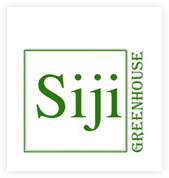Idiosyncrasies of Plants for Designing
Idiosyncrasies of plants
Available light is probably the single most important element contributing to a plant’s survival indoors.
The indoor environment is relatively constant and pre-determined with respect to temperature and humidity, so light is usually the critical factor. The key to success is to select the right plant for the right place in the first instance relating to available light durations and intensities.
Incorrect selection can create a number of future problems and incur unnecessary costs to put things right. On the other hand, an appropriate selection will bear dividends, simplifying maintenance and reducing long-term costs.
The Indoor Environment
Many of the plants used for indoor landscape, come from tropical and semi-tropical regions where some of the above environmental fluctuations are less extreme, making them more suitable subjects for adaptation to the indoor environment.
Even within the natural habitat of these plants, there are those that thrive under different conditions, some will flourish in strong sunlight some will prefer shade; some will enjoy frequent rain, others less so etc. Likewise, in the interior setting, different plant will benefit from different environmental characteristics. The proposed setting will dictate to a large degree which type of plant should be selected.
Factors Relating to Plant Selection
Light
Light levels in buildings can vary enormously; an atrium may be suffused with light during the day, whereas a conference room may be dark most of the time. Between these two extremes buildings will inevitably have a wide variation of available light, depending on the function of the space.



Light Measurement
Assessing light levels is best done with a light meter (these give readings in Lux or PAR {Photosynthetically Active Radiation}). Many people will rely on experience and try to make a judgment based on their own visual perception, but this can be misleading as eyes very quickly adjust to different degrees of lighting. When measuring the light level, an allowance should be made for the type of light source (natural / artificial), its likely duration, and if ‘natural’ the position of the sun at the time of taking the reading. It is not only the strength of the light, but the duration that will affect the plant’s performance. (Duration is likely to be more important in relatively dim – artificially lit scenarios).
It is important to measure the light level where the plant is to be positioned. Many factors can affect the available light, which can vary dramatically over very short distances indoors. A measurement taken close to a window could be circa 2000 lux for example, whereas a reading taken only 1m away from the window could be 1000 lux and 2m from the window 500 lux. (approx. a 50% reduction per meter!). Tinted glass may have a greater effect. Curtains, blinds, furnishings and interior finishes can also reduce available light by absorption.
Light Natural and Artificial
Natural light through windows and skylights is a cheap source of light that covers the full spectrum, whereas artificial light is predominantly designed for mood, ensuring safe movement within public areas and facilitating the intended functions and operations. Inevitably, this is the focus, and detailed thought pertaining to lighting for indoor landscape takes a secondary position to human comfort and intended function. It is often too late to make accommodations for live plants late in the design process, so the ingenuity and knowledge of the indoor landscape design is needed to overcome these limitations and to achieve the desired results. It is obviously preferable to consider these factors earlier in the design process rather than treating it as a last minute decoration (as is often the case), as far more opportunities can be created to include dramatic plant displays.
Natural light is best, but some types of artificial light of sufficient intensity can also be acceptable. The most important ranges within the spectrum are in the red, violet and blue part. Consideration should be given to the distance from the light source to the plant however and the area covered by the light. (Some spotlights have a very narrow beam), and the available light can diminish quickly from the source. Caution should be taken with artificial lighting as some lights generate a lot of heat, and if placed too close to plants can cause burning and severely disfigure it.
Temperature
The temperature in buildings, like light and humidity, is predominantly set from the start within a predetermined range by the building design. Again it is set for human comfort and is usually in the range of 16-25 Cº. Most plants used for indoor landscapes can happily tolerate this range.
Humidity
Humidity is largely beyond the control of indoor landscape contractors and must be taken on board during the specification process. Normally the ranges of humidity found indoors should not cause too many problems though.
Some buildings may have included humidification equipment, some may not, and sometimes other factors such as air conditioning may play a role. Air conditioning reduces the relative humidity. The lower the humidity, the faster the rate of transpiration (the process whereby water is taken up from the soil by the roots and, after travelling through the vessels, evaporates through the leaves). Transpiration, a natural process in plants can add water vapour locally but is not significant unless there are a lot of plants present. The transpiration rate will tend to be higher when the surrounding air is drier.
In extreme cases, a combination of high temperatures, high light levels and very low humidity may cause plants to wilt, as water cannot be taken up by the roots fast enough to cope with the rate of evaporation from the leaves, but this is rare. This can be exacerbated by the fact that many indoor plants especially larger ones (in pots) have a relatively small reservoir of water on which to draw, due to the limitation of the pot size.

